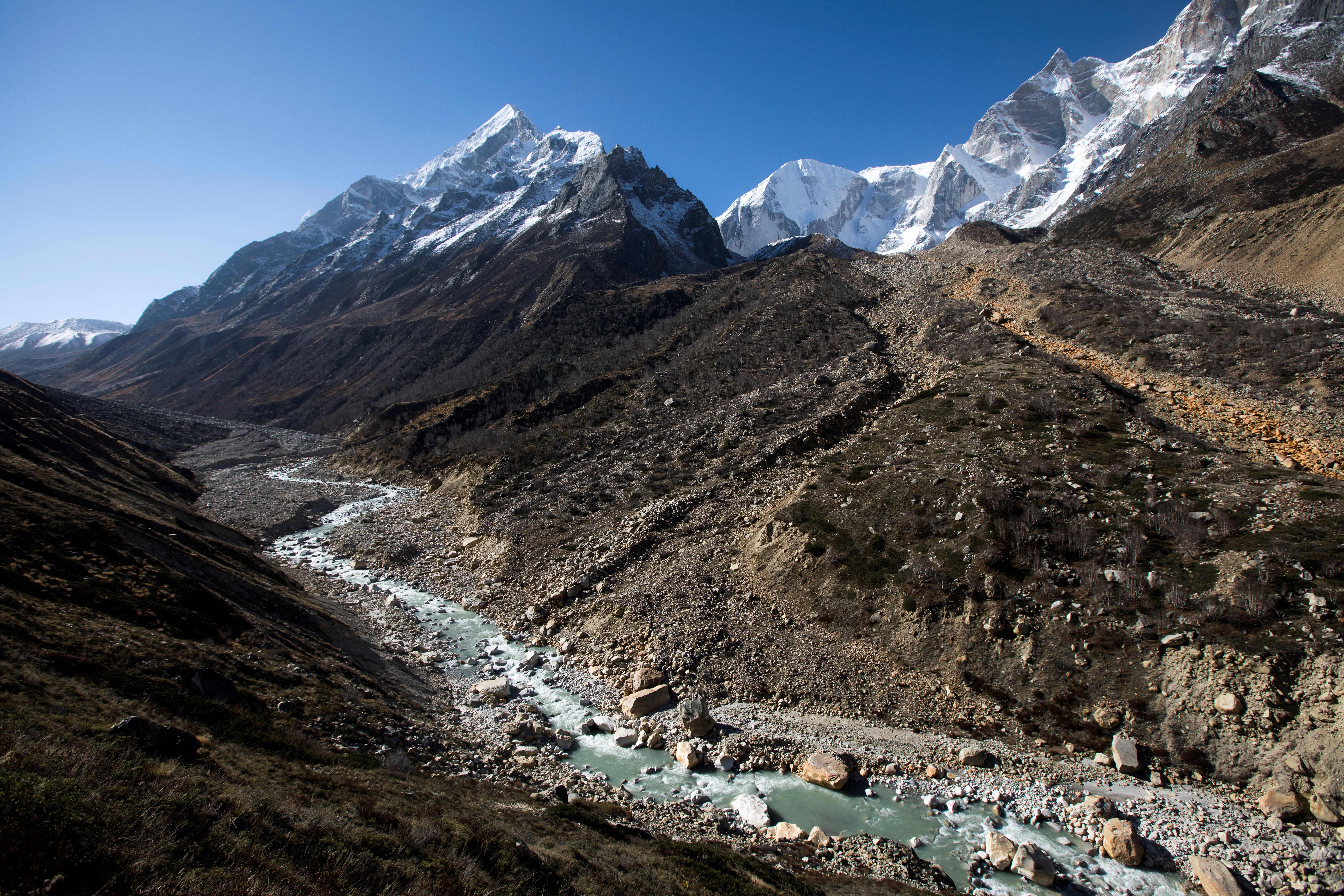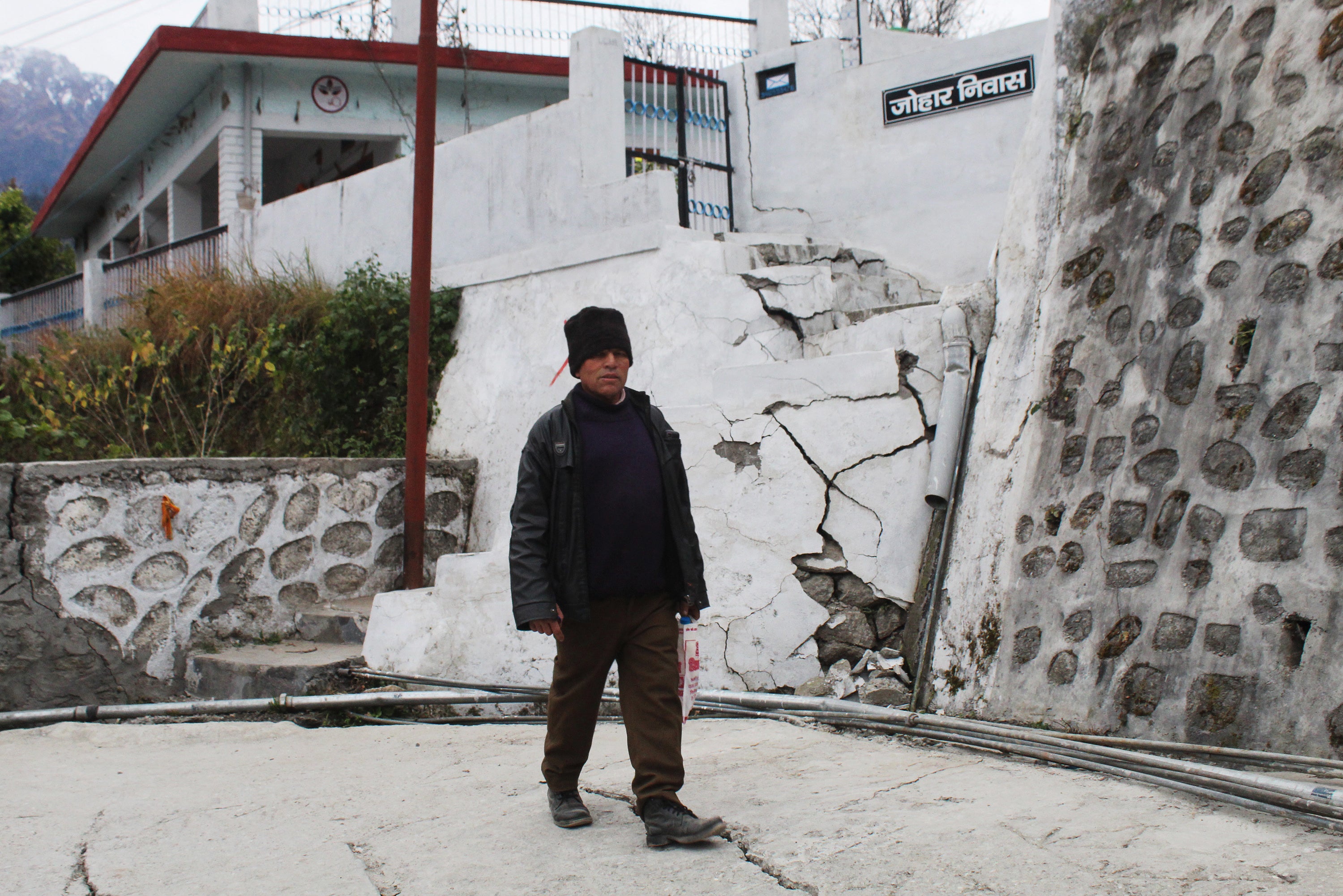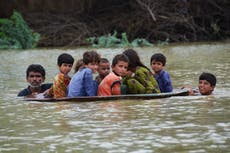Himalayan glaciers are melting faster than ever before, scientists warn
Two billion people – most of whom have not contributed to the worsening environment – are now vulnerable

Himalayan glaciers are melting at unprecedented rates and could lose up to 80 per cent of their volume this century if the Earth continues to heat, said a new report.
Changes to the glaciers, snow and permafrost of the Hindu Kush Himalayan (HKH) region driven by global heating are “unprecedented and largely irreversible”, said the report released on Tuesday Kathmandu-based International Centre for Integrated Mountain Development (Icimod).
The Himalayan glaciers have, in fact, disappeared 65 per cent faster since 2010 than in the previous decade, it said.
The unprecedented melting has an impact on over 2 billion people that depend on rivers flowing from these mountains for freshwater sources, as well as the communities living in the region that are more at threat of extreme weather events.
The report comes as a marine heatwave in the northern Atlantic region breaks records and worries scientists around the world.
The authors of the report warned that amid global heating and anomalies experienced elsewhere in the cryosphere – regions on Earth covered by snow and ice – the consequences of melting Himalayan glaciers can be catastrophic for the entire world.
“The glaciers of the Hindu Kush Himalaya are a major component of the Earth system. With two billion people in Asia reliant on the water that glaciers and snow here hold, the consequences of losing this cryosphere are too vast to contemplate,” said Izabella Koziell, Icimod’s deputy director general.
The study warned that as glaciers melt faster than ever before, the region is put under increased threats of flash floods and avalanches, apart from affecting the availability of fresh water for billions who live downstream of 12 rivers that originate in the mountains.
The melting of the Hindu Kush glaciers has played a critical role in recent disasters, including in the devastating floods in Pakistan last year that killed 1,700 people.
Also read: What caused Pakistan’s deadly floods? From melting glaciers to ‘monster’ monsoon
The ice and snow in the Himalayan ranges is a source of water for rivers flowing through 16 Asian countries, providing fresh water to 240 million people in the mountains and another 1.65 billion downstream.
This report zeroes in on the devastating implications this will have on two billion people and the nature that rely on the water and ecosystems of the Hindu Kush Himalaya.”
“The people living in these mountains who have contributed next to nothing to global warming are at high risk due to climate change,” said Amina Maharjan, a migration specialist and one of the report’s authors.
“Current adaptation efforts are wholly insufficient, and we are extremely concerned that without greater support, these communities will be unable to cope.”
Many earlier reports found the cryosphere to be among the worst affected by the climate crisis.
Recent research found that Mount Everest’s glaciers, for example, have lost 2,000 years of ice in just the past 30 years.
“We map out for the first time the linkages between cryosphere change with water, ecosystems and society in this mountain region,” Ms Maharjan said.
Effects of the climate crisis are already felt by Himalayan communities – sometimes acutely. Earlier this year, Joshimath, a mountain town in India, began sinking and residents had to be relocated within days.

“Once ice melts in these regions, it’s very difficult to put it back to its frozen form,” said Pam Pearson, director of the International Cryosphere Climate Initiative, who was not involved with the report.
“It’s like a big ship in the ocean. Once the ice starts going, it’s very hard to stop,” she said. “So, with glaciers, especially the big glaciers in the Himalayas, once they start losing mass, that’s going to continue for a really long time before it can stabilize.”
Ms Pearson said it is extremely important for Earth’s snow, permafrost and ice to limit heating to the 1.5C agreed to at the landmark 2015 Paris Agreement.
“I get the sense that most policymakers don’t take the goal seriously but, in the cryosphere, irreversible changes are already happening,” she said.
“In all three pillars of climate action – in mitigation, adaptation and loss and damage – we are at a standstill or going the wrong way; while the consequences of inaction are accelerating by the day,” said professor Saleemul Huq, director of the International Centre for Climate Change and Development in Bangladesh, and member of the advisory board to the UN climate conference this year, Cop28.
“This report zeroes in on the devastating implications this will have on two billion people and the nature that rely on the water and ecosystems of the Hindu Kush Himalaya.”
“It is beyond time that governments, donors and agencies step up: to exit fossil fuels and honour their commitments to limit warming, to help communities adapt to those temperature rises already locked in and to compensate them for property and ways of life that have already been lost,” he said.






Join our commenting forum
Join thought-provoking conversations, follow other Independent readers and see their replies
0Comments